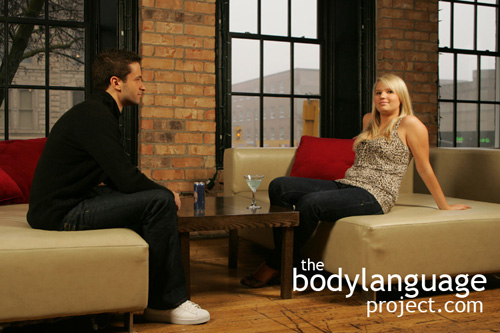Since we’ve isolated women as the best readers of body language, it’s time to weed out the rest of the bad apples from the bunch. In fact, many other factors, aside from our sexes, play into our ability to read and use body language.
The first such factor is our age. Children first learn to communicate through nonverbal channels by using posture, gestures and proximity to influence the behaviour of the adults around them. If this doesn’t work they will resort to crying but for the most part this is non-directional and unsophisticated. In children, it is their body language which helps us to figure out their true desires. Before they can signal nonverbally, we are simply left guessing so thankfully children have relatively simple and predictable needs. Once they figure out the use of words, their nonverbal gestures quickly diminish and eventually get mostly left by the wayside. Children who first begin to speak will show more interest in speaking then other channels even if it means they need to interact more with their adult counterparts versus other children of the same age. At the age of three, most children have lost or dropped almost all of their nonverbal communication and are fully into verbal speech.
Age also plays another more important role in reading body language. Those people that are closest to our age are the easiest to read. Our ability to accurately read others is much lower with people who are much younger and much older then ourselves and easiest amongst our own peer group. We spend the most amount of time with our peer group so familiarity could be a factor, however, more importantly is our ability to relate and empathize. So the take-away message is that our ability to empathize with the needs, desires and emotions of others is a key part in reading body language. Empathy is the ability to put ourselves in the shoes of others and to feel what they feel.
The greater the gap in age between the reader and the target, the greater is the discrepancy in accuracy. If you’ve ever watch siblings of similar age, you know that they have an uncanny ability to interpret and understand each other. It’s particularly interesting to watch small children decipher each others seemingly nonsensical gibberish and random movements. Naturally it follows that teenagers and seniors are difficult to read by the middle aged and children are poor readers of all adults (or at least do a good job pretend to be).
Older faces are difficult to read naturally, even for other seniors. Older faces have
weaker muscle tone, and so produce less exaggerated expressions. What expressions are made are then covered by wrinkles disguising them even more. Status and occupational differences that we see everyday at work, also make it difficult for us to read others. Upper management dealing with lower management in a company or teachers dealing with students must deal with cohort differences daily and it can become stressful.
Higher status people might lack the interest to associate with lower status people and low status people might sense this and so return less eye contact feeling not cared about. This lack of empathy spirals into each party caring less and less about each other. Lower status employees may also feel envious of higher status employees and share less information with them make it difficult to develop empathy. Health care workers that spend a lot of time with seniors can develop skills and read them more accurately, but only if they empathize with them. To be a good body language reader, you have to be able to put yourself in someone else’s position, and see the world as they do.




